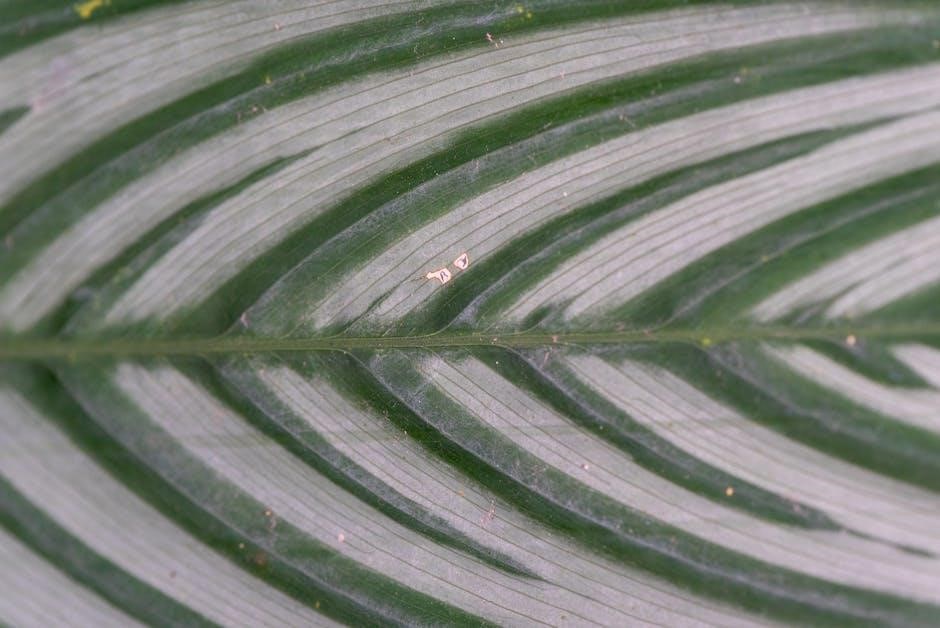Zoom Bleaching is a popular cosmetic dental procedure offering professional in-office and take-home whitening solutions. It safely lightens teeth up to eight shades, promoting a brighter, healthier smile.
1.1 What is Zoom Bleaching?
Zoom Bleaching is a professional teeth whitening treatment designed to safely and effectively lighten tooth enamel. It is available in two forms: in-office and take-home options. The process uses a hydrogen peroxide-based gel applied to the teeth, activated by a special light in in-office treatments. This method targets stubborn stains and discoloration, delivering visible results in a short time. Zoom Bleaching is known for its ability to whiten teeth by up to eight shades, providing a brighter, more confident smile. It is supervised by dental professionals, ensuring safety and efficacy. Following instructions carefully is crucial to avoid sensitivity or enamel damage.
1.2 Benefits of Zoom Bleaching
Zoom Bleaching is a popular choice for teeth whitening due to its safety, effectiveness, and quick results. It can lighten teeth by up to eight shades, addressing both surface and deep stains. The procedure is minimally invasive and supervised by professionals, reducing risks of enamel damage. Zoom Bleaching offers customizable options, including in-office and take-home treatments, catering to different lifestyles. Results are visible immediately, boosting confidence and improving smile aesthetics. By following instructions, patients can achieve long-lasting, professional-grade whitening safely and efficiently, making it a preferred method for achieving a brighter, healthier-looking smile.

In-Office Zoom Bleaching
In-office Zoom Bleaching is a professional whitening treatment performed under dentist supervision, offering immediate results and tailored care for optimal safety and effectiveness.
2.1 Process of In-Office Zoom Bleaching
The process begins with a dental examination to ensure suitability. Teeth are cleaned, and a protective barrier is applied to gums and lips. The Zoom bleaching gel is applied, followed by exposure to the Zoom lamp. The gel is reapplied in 15-20 minute intervals, typically 3-4 times. The procedure lasts about 90 minutes, achieving noticeable results immediately. Post-treatment instructions are provided to maintain outcomes. This method ensures professional guidance, minimizing risks and enhancing effectiveness for a brighter, whiter smile in a single visit.
2.2 Advantages of In-Office Zoom Bleaching
In-office Zoom bleaching offers immediate, dramatic results under professional supervision, ensuring safety and effectiveness. The procedure is customized to individual needs, with the dentist adjusting the treatment for optimal outcomes. The controlled environment minimizes risks, such as gum irritation, and enhances precision. Patients benefit from faster results compared to take-home options, achieving a whiter smile in a single visit. This method is ideal for those seeking quick, noticeable improvements with professional guidance, making it a convenient and reliable choice for achieving a brighter, more confident smile.

Take-Home Zoom Bleaching
Take-home Zoom bleaching allows patients to achieve professional-grade whitening in the comfort of their own homes with custom-fit trays and specialized gel, offering convenience and affordability.
3.1 Process of Take-Home Zoom Bleaching
The process begins with a dentist creating custom-fitted bleaching trays based on impressions of your teeth. You’ll receive a professional-grade bleaching gel and instructions for use. Apply a small amount of gel to the trays, avoiding the gum areas, and wear them for the recommended time, typically 30 minutes to a few hours, depending on the gel concentration. Repeat daily for 1-2 weeks as prescribed. The trays are comfortable and discreet, allowing you to whiten your teeth at home conveniently. Results are gradual but noticeable, with significant improvement in tooth color over the treatment period.
3.2 Advantages of Take-Home Zoom Bleaching
Take-home Zoom Bleaching offers flexibility and convenience, allowing you to whiten your teeth at your own pace. It is cost-effective compared to in-office treatments while still delivering professional-grade results. Custom-fit trays ensure even gel distribution and minimize gum irritation. The process is private, enabling you to achieve a brighter smile without frequent dental visits. Results are gradual, reducing the risk of drastic color changes. This method is ideal for those seeking a comfortable, self-managed solution to achieve a whiter, healthier-looking smile from the comfort of their home.

Pre-Bleaching Care
Ensure a clean, healthy mouth by addressing dental issues and avoiding staining foods. Professional cleaning and proper preparation enhance bleaching effectiveness and safety, ensuring optimal results.
4.1 Importance of Pre-Bleaching Preparation
Pre-bleaching preparation is crucial for ensuring safety, comfort, and optimal results. A professional dental cleaning removes plaque and tartar, allowing the bleaching gel to adhere evenly. Addressing cavities, gum disease, or worn enamel prevents complications. Proper preparation minimizes sensitivity and ensures the gel works effectively. It also helps avoid uneven whitening and protects sensitive areas. A clean, healthy mouth is essential for achieving the best outcomes and maintaining long-lasting results. Skipping preparation can lead to discomfort or reduced effectiveness, making pre-bleaching care a vital step in the Zoom bleaching process.
4.2 Steps to Prepare for Zoom Bleaching
To prepare for Zoom bleaching, start by scheduling a dental checkup to ensure oral health. Avoid staining foods and drinks, such as coffee and berries, for 24-48 hours before the procedure. Clean and rinse your teeth thoroughly. Avoid tobacco and alcohol for at least 24 hours prior. On the day of bleaching, arrive with clean teeth and avoid eating or drinking for two hours beforehand. Wear comfortable clothing and inform your dentist of any sensitivity or dental work. This ensures a safe and effective treatment experience.

Post-Bleaching Care
Proper post-bleaching care is essential to maintain results and prevent staining. Good oral hygiene and avoiding staining foods/drinks are crucial for long-lasting whiteness and healthy teeth.
5.1 Importance of Post-Bleaching Care
Post-bleaching care is crucial to maintain the results of Zoom bleaching and ensure long-term satisfaction. Proper care helps prevent staining, protects the enamel, and avoids sensitivity. Neglecting post-care can lead to rapid discoloration and undermine the treatment’s effectiveness. By following guidelines, patients can preserve their bright smile and maintain oral health. Consistent oral hygiene, avoiding staining agents, and monitoring dietary habits are key to sustaining the outcomes. Regular check-ups with your dentist also ensure any potential issues are addressed early, ensuring the longevity of your whitened teeth and overall dental well-being.
5.2 Steps to Maintain Results After Bleaching
To maintain Zoom bleaching results, avoid staining foods like coffee, tea, and berries, and refrain from smoking. Use a straw for drinks to minimize contact with teeth. Brush and floss daily with fluoride toothpaste to protect enamel. Attend regular dental cleanings to remove surface stains. Touch-up sessions every 6-12 months can refresh results. Wear custom trays occasionally if provided. Limit sugary snacks to prevent acid erosion, and rinse mouth with water after consuming staining agents. Consistent care ensures a brighter, longer-lasting smile and prevents discoloration.
Safety Considerations
Ensure safe Zoom bleaching by following instructions, using protective gear, and consulting a dentist beforehand. Avoid overuse to prevent enamel damage and gum irritation.
6.1 Potential Side Effects of Zoom Bleaching
Common side effects of Zoom bleaching include tooth sensitivity and gum irritation. Sensitivity occurs due to the bleaching gel penetrating enamel, while gum irritation may result from improper application. Both are temporary and typically subside within a few days. In rare cases, overuse or high concentration of bleach can cause more severe discomfort. To minimize risks, follow instructions carefully and avoid prolonged exposure. Consulting a dentist before treatment ensures suitability and reduces potential side effects. Proper usage and adherence to guidelines are essential for a safe and effective bleaching experience.
6.2 How to Minimize Tooth Sensitivity
To minimize tooth sensitivity during Zoom bleaching, use a desensitizing toothpaste 1-2 weeks before treatment. Apply the bleaching gel carefully, avoiding gum exposure. Use a straw for staining foods/drinks to reduce contact. Avoid hot/cold beverages temporarily. Consider using products with potassium nitrate for added protection. After treatment, rinse with warm water and avoid harsh brushing. For persistent sensitivity, consult your dentist for recommendations or adjustments. These steps help reduce discomfort while achieving desired results.
6.3 Protecting Gums During Bleaching
Protecting gums during Zoom bleaching is crucial to avoid irritation. A rubber dam or protective gel is applied to cover gums before applying bleaching agents. Ensure the gel is carefully painted onto teeth, avoiding gum contact. Follow the dentist’s instructions precisely to prevent exposure. After treatment, rinse with warm water and avoid spicy or acidic foods to reduce irritation. Use a soft toothbrush and mild toothpaste to maintain gum health. Soothing mouthwashes can also help calm the gums. Proper care ensures a comfortable and effective bleaching experience with minimal discomfort.
Application Instructions
Prepare teeth by brushing lightly. Apply bleaching gel evenly, avoiding gums. Use custom trays for 30 minutes to 1 hour. Follow dentist guidelines strictly.
7.1 Preparing Your Teeth for Bleaching
Start by cleaning your teeth with a mild toothpaste to remove plaque. Avoid using whitening toothpaste or abrasive products. Rinse thoroughly and pat dry with a clean cloth. Check for any tooth sensitivity or gum recession, as these may need attention before bleaching. Avoid consuming staining foods and drinks like coffee or berries for 24 hours prior. Ensure your gums are healthy, as bleaching gels can irritate sensitive tissues. Consult your dentist if you have dental work, as crowns or fillings may not respond to bleaching. Proper preparation ensures even results and minimizes potential discomfort.
7.2 Applying the Bleaching Gel
Apply a small bead of Zoom bleaching gel to each tooth in the tray, avoiding overfilling. Gently insert the trays, ensuring they fit snugly without air pockets. Focus on the front teeth for cosmetic effectiveness. Avoid creating bubbles for even coverage; After applying, wait the recommended 15-30 minutes. Spit out the gel without rinsing immediately, then rinse with cold water. Clean the trays with cold water and air dry to prevent bacteria growth. Be mindful of potential tooth sensitivity and follow instructions carefully for optimal results.
7.3 Using the Bleaching Trays
Insert the bleaching trays gently into your mouth, ensuring they align with your teeth. Avoid moving or adjusting the trays once in place. Keep the trays in your mouth for the recommended time, usually 15–30 minutes. Do not eat, drink, or speak during this period. After the session, remove the trays and rinse them with cold water. Spit out any remaining gel but avoid rinsing your mouth immediately. Store the trays in a protective case to maintain hygiene and shape. Follow the schedule provided by your dentist for consistent results and to avoid over-bleaching.

Duration of Bleaching Sessions
Zoom bleaching sessions typically last 15–30 minutes per tray application. For in-office treatments, expect 2–4 sessions, each lasting about 15 minutes. At-home trays are worn overnight.
8.1 Recommended Wear Time for Trays
The recommended wear time for Zoom bleaching trays varies depending on the treatment type. For in-office treatments, trays are typically worn for 15–30 minutes per session, with multiple sessions spaced out. At-home trays are usually worn for 4–6 hours daily or overnight for 6–8 hours. Proper adherence to the wear time ensures optimal results and minimizes tooth sensitivity. Consistency is key for achieving the desired whitening effect. Always follow your dentist’s specific instructions for wear time to ensure safety and effectiveness.
8.2 How Long to Expect Results
Results from Zoom bleaching are typically visible within a few days to a week. The extent of staining and the type of treatment influence the timeline. In-office treatments often show immediate improvements, while take-home kits may require several days for noticeable changes. For more severe discoloration, multiple sessions might be needed. With proper post-care, results can last several months. Consistency and adherence to dentist recommendations are key for achieving desired outcomes.

Avoiding Staining Foods and Drinks
To maintain whitening results, avoid staining foods like coffee, tea, red wine, berries, and tomato-based sauces. Limit dark-colored drinks and foods immediately after treatment.
9.1 Foods to Avoid After Bleaching
To preserve the results of Zoom bleaching, it’s crucial to avoid foods that can stain your teeth. Coffee, tea, and red wine are major culprits due to their deep pigments. Berries, such as blueberries and raspberries, and tomato-based sauces are also prone to staining. Dark-colored foods like soy sauce, balsamic vinegar, and curry should be consumed with caution. These foods can seep into the tooth enamel and discolor it, especially in the first few days after treatment. Opting for lighter-colored alternatives, like white sauces or green tea, can help maintain your smile’s brightness.
9.2 Drinks to Avoid After Bleaching
After Zoom bleaching, certain drinks can stain your teeth and reduce the effectiveness of the treatment. Coffee and tea, especially black varieties, contain tannins that can seep into tooth enamel. Red wine is another major offender due to its deep pigments. Sugary sodas, dark-colored juices like cranberry or grape, and energy drinks should also be avoided. These beverages can quickly reverse the whitening results. To minimize exposure, use a straw when consuming these drinks and rinse your mouth with water afterward. Opt for water, milk, or herbal teas to protect your smile and maintain the bleaching results for longer.

Handling Bleaching Gel
Proper handling of Zoom bleaching gel ensures safety and effectiveness. Always follow instructions carefully to avoid skin or gum irritation. Store the gel in a cool, dry place, out of children’s reach. Dispose of unused gel responsibly. Avoid direct contact with sensitive areas to prevent discomfort. Handle the gel with clean hands or gloves to maintain hygiene. Proper handling helps achieve desired results while minimizing potential risks.
10.1 Proper Storage of Bleaching Gel
Proper storage of Zoom bleaching gel is essential to maintain its effectiveness. Store the gel in a cool, dry place, away from direct sunlight and moisture. Keep it at room temperature, ideally between 15°C and 25°C (59°F to 77°F). Ensure the container is tightly sealed after each use to prevent contamination. Avoid storing it in bathrooms or areas with high humidity. Keep it out of reach of children and pets. Check the expiration date before use and avoid freezing, as this can alter the gel’s consistency. Proper storage ensures the gel remains stable and effective for your whitening needs.
10.2 Disposal of Used Gel
Dispose of used Zoom bleaching gel responsibly to maintain safety and hygiene. After applying the gel, any leftover should be discarded in a sealed container or wrapped in tissue to prevent leakage. Do not flush it down the drain, as it may harm the environment. Properly dispose of empty syringes or trays in a trash bin. Avoid contamination by ensuring hands are clean when handling the gel. For large quantities, consult local waste disposal guidelines. Always follow safe disposal practices to protect both health and the environment. This ensures the gel is handled safely and ethically after use.

Troubleshooting Common Issues
Address common concerns like sensitivity or uneven results by adjusting treatment duration or consulting a dentist. Proper technique and adherence to instructions minimize issues.
11.1 Dealing with Tooth Sensitivity
Tooth sensitivity is a common side effect of Zoom bleaching. It occurs when the bleaching gel penetrates the enamel, reaching the nerves. To alleviate discomfort, use a desensitizing toothpaste before and after treatment. Reduce the duration of bleaching sessions or apply a desensitizing gel provided by your dentist. Avoid hot or cold foods/drinks temporarily. In severe cases, consult your dentist for personalized solutions. Sensitivity typically subsides within a few days post-treatment.
11.2 Addressing Uneven Whitening
Uneven whitening can occur due to variations in enamel thickness, existing dental work, or uneven gel application. To address this, consult your dentist for a follow-up session. They may recommend additional treatments or touch-ups. Ensure proper gel application by following instructions carefully. Avoid staining foods and drinks to maintain even results. If unevenness persists, your dentist may suggest alternative whitening options or cosmetic procedures like bonding. Regular dental cleanings and good oral hygiene can also help maintain a uniform appearance. Consistency and professional guidance are key to achieving balanced whitening outcomes.

Maintenance and Touch-Ups
Regular maintenance ensures long-lasting results. Touch-ups help preserve whiteness. Personalized advice from dentists optimizes outcomes, keeping your smile bright and consistent over time.
12.1 How to Maintain Whitening Results
Maintaining Zoom bleaching results involves regular dental check-ups and good oral hygiene. Use touch-up kits as recommended to refresh whiteness. Store bleaching trays properly to prevent damage. Brush and floss daily to prevent new stains. Avoid tobacco and limit staining foods/drinks. Using a straw for beverages like coffee or tea can help reduce contact with teeth. For optimal results, touch-ups every 6-12 months are advised. Consistency in these habits ensures a brighter, longer-lasting smile. Always consult your dentist for personalized advice on maintaining your whitening results effectively.
12.2 When to Consider Touch-Up Sessions
Touch-up sessions are recommended every 6-12 months to maintain whitening results, especially if stains reappear. Factors like smoking, coffee consumption, or tea drinking may require more frequent touch-ups. Noticeable discoloration or dullness signals the need for a session. Personal preference for maintaining brightness also plays a role. Consulting your dentist for professional advice ensures optimal results. Using touch-up kits as directed helps sustain whiteness effectively. Regular touch-ups prevent significant staining, keeping your smile vibrant and consistent over time.
Zoom bleaching offers successful results when following instructions and maintaining proper care. Regular touch-ups and professional advice ensure a bright, long-lasting smile. Consider consulting your dentist.
13.1 Final Tips for Successful Zoom Bleaching
For optimal results, strictly follow the instructions provided by your dentist or the product guide. Maintain good oral hygiene and avoid staining foods/drinks immediately after treatment. Touch-up sessions can help sustain whiteness. If sensitivity occurs, consider using desensitizing products. Store bleaching gel properly to ensure effectiveness. Attend follow-up appointments to monitor progress. Combining in-office and take-home treatments may yield better outcomes. Be patient, as results vary per individual. Celebrate your brighter smile by maintaining consistent care and avoiding habits that stain teeth. Remember, professional guidance is key to achieving and preserving a dazzling, white smile.